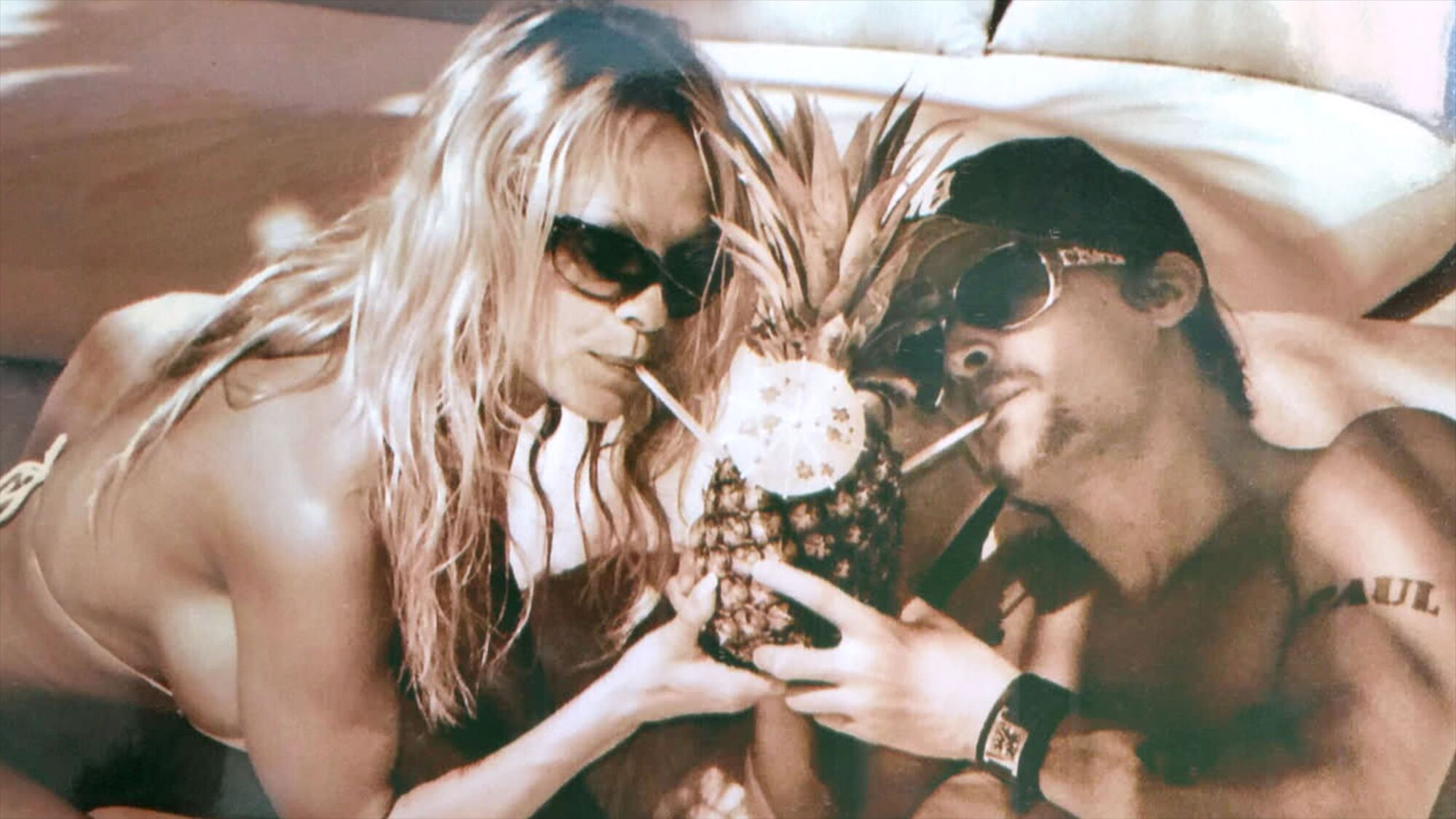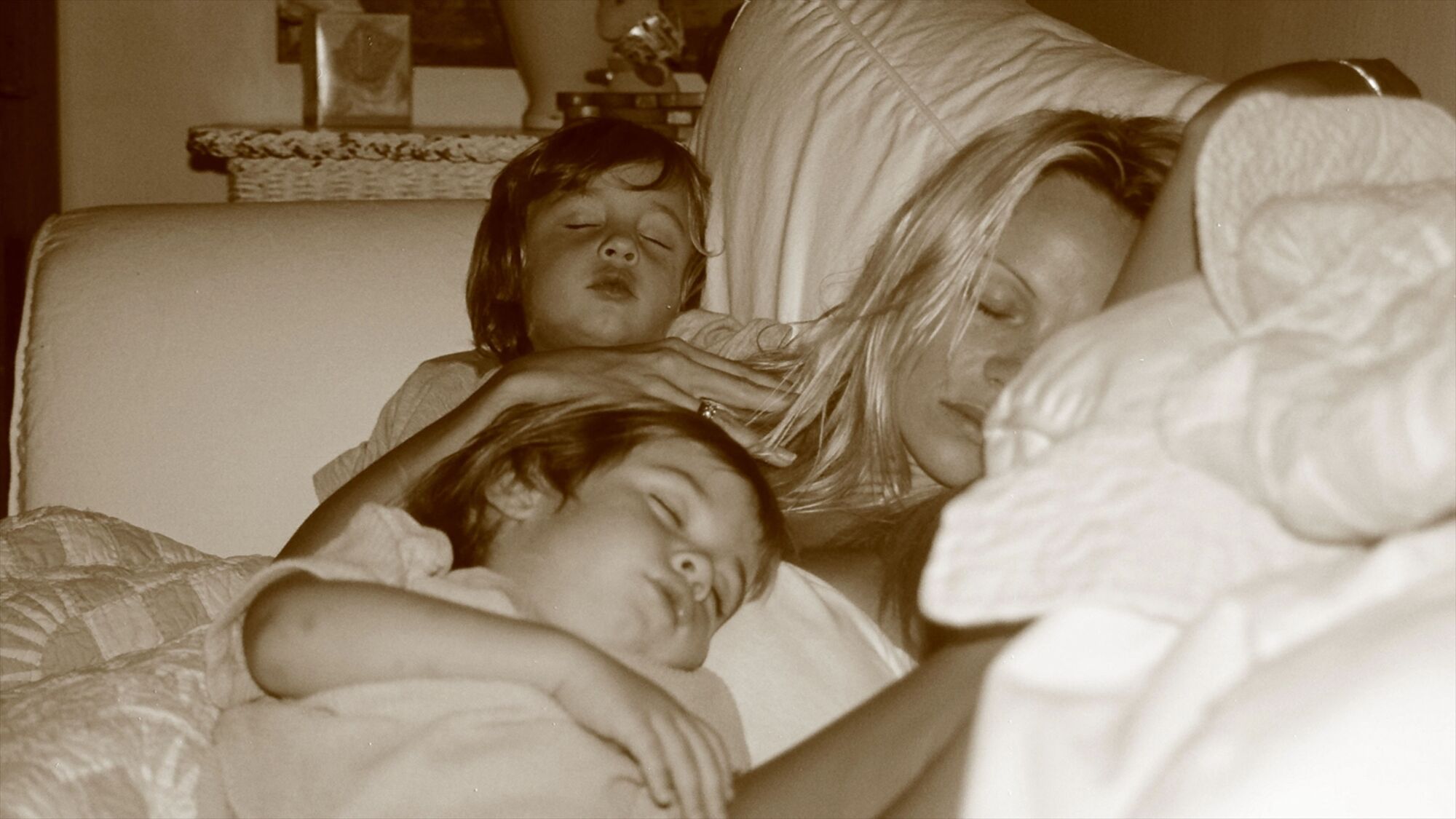On the Shelf and Streaming
Pamela Anderson tells her story
Love, Pamela
By Pamela Anderson
Dey Street: 256 pages, $40
Pamela Anderson: A Love Story
Where: Netflix
When: Streaming starting Jan. 31
If you buy books linked on our site, The Times may earn a commission from Bookshop.org, whose fees support independent bookstores.
If you’re planning to write a memoir any time soon, you might want to contact a documentary filmmaker first.
Following in the narrative-seizing steps of the Duke and Duchess of Sussex, who chased the Netflix documentary series “Harry & Meghan” with Harry’s memoir “Spare,” Pamela Anderson has scheduled a simultaneous release of her book, “Love, Pamela” and a Netflix doc, “Pamela, A Love Story.”
Coming from what many would consider opposite ends of the cultural spectrum, the two multimedia enterprises share a common purpose — to reveal the personal reality obscured by a public narrative too often manipulated by others for fun and profit.
Like “Spare” and “Harry & Meghan,” the Pamela properties offer a personal treatise, visceral and philosophical, on the nature of fame. Even as they have unarguably reaped the benefits of celebrity, both the Sussexes and Anderson have been savaged in the name of public interest, too often fed by ravening paparazzi and an endlessly grinding media mill that takes delight in giving, withholding and demanding payment for that “interest.”
Each is also the explosion of a deeply held cultural myth — one the fairy tale of being born royal, the other an admittedly grittier version of “Kid, I’ll make you a star.”
That alone makes Anderson’s book/doc combo worthy of attention. Like pretty much everyone, I have long been aware of portions of Anderson’s story — “Baywatch,” her marriage to Mötley Crüe drummer Tommy Lee, the release of their sex tape, their divorce and a subsequently ragged career that seemed to mark Anderson as the last of the Hollywood bombshells. I was not a fan, nor did I despise her as many seemed to. The endless jokes about her breasts and the tabloid exposure of her personal life made me wince the way casual sexism always does, but I didn’t consider her either a victim or an icon.
I still don’t, but reading and watching her own version of her life illuminates not just her own story, but the often hideous cultural hypocrisy at work in all forms of the entertainment industry and the media surrounding it. Anderson, unlike Prince Harry, pursued a public life she wasn’t born into. But she did not choose, nor could she have foreseen, the damage caused by a public life pursuing her.
Anderson was born in Ladysmith, Canada, a small town on British Columbia’s Vancouver Island. In “Love, Pamela,” she describes a happy early childhood of dirt-pies and garter snakes, punctuated by loud, sometimes violent strife between her young parents that did nothing to dampen her longing for romance and marriage.
Neither did the sexual trauma she describes with striking brevity — a female babysitter sexually abused her and then, when she was 12, a 25-year-old acquaintance raped her. “After, I thought everyone could tell — like I had it tattooed on my forehead … I thought I was bad, and I was ashamed … It hurt me a lot, keeping this secret … Eventually I just blocked it out.”

Her own early (and later) relationships were, not surprisingly, with men like her father: handsome, volatile and masculine in a way that is now often described as toxic. Though she read deeply and widely, Anderson had no plans for entering a world wider than Vancouver when she was lifted from obscurity during a BC Lions game. She was wearing a T-shirt given to her by a friend who was a LaBatt beer rep and after her image was picked up by the Jumbotron, LaBatt made her a spokesperson, putting her on a poster and in commercials.
A short time later, Playboy called.
In a few years, Anderson was one of the most famous people on the planet. Beloved by Hugh Hefner, to whom she remains rigorously grateful, she became one of most popular Playmates at a time when that had a lot of cultural cachet. She got a small recurring part on “Home Improvement,” during which she alleges star Tim Allen once exposed himself to her, joking that as he had seen her naked, it was only fair. (Allen denies the incident.) Then she joined the cast of “Baywatch” and became an international icon.
The NBC lifeguard drama remains the most watched television series in the world. For millions, “Baywatch” became emblematic of American culture and for many (sorry, David Hasselhoff), Anderson — as C. J. Parker — was “Baywatch.”
Over the years, she was pursued by many famous men (including, as the book describes in an unsettling “gilded cage” interlude, a possessive Jon Peters). So it is not surprising that her decision to marry Tommy Lee made headlines around the world and took her fame to another level.
With their party-hard, big-hair, bit tats style of leather, feathers and very public displays of affection, Pam and Tommy were the “It” couple of ’90s, living large and seemingly loving it.
But that kind of attention almost always ends in downfall. Paparazzi made their lives a misery, and Lee’s short temper only increased the attention and goading. In private, it wasn’t much better. Lee, like many men in Anderson’s life, became controlling; he installed himself on the “Baywatch” set and trashed a makeup trailer after a scene involved her character kissing another. In a brief but shattering passage, she describes swallowing a bottle of Advil chased by vodka and sinking into her bathtub, then vomiting and passing out. At the hospital, she discovered she was pregnant, and for a few years their lives got better. After that pregnancy ended in miscarriage, Anderson and Lee had two sons, Brandon and Dylan.
Then their safe was stolen. Its contents included an intimate video from their honeymoon, and fame took a disastrous turn. Scenes were spliced to create the now-infamous sex tape, first sold as a video cassette, then poured into the nascent internet. In recent years, there has been public acknowledgment of this as an illegal and hideous invasion of privacy, but at the time there was nothing but a pile-on.
At best, the tape was seen as some sort of cosmic comeuppance for a couple that flouted so many social standards; at worst, it was a publicity stunt engineered by Anderson and Lee to boost their careers.
Reams have been written about that tape, which many now consider to have launched the internet; it recently served as the story line of the Hulu series “Pam & Tommy” (which Anderson denounces and refuses to watch). But though it derailed her career and hastened the end of her marriage, Anderson devotes only six pages to it in “Love, Pamela.” Six pages that end with “It ruined lives, starting with our relationship — and it’s unforgivable that people, still to this day, think they can profit from such a terrible experience.”

Pamela Anderson, left, and Kid Rock were married for a short time. From “Pamela, A Love Story.”
(Netflix)
Anderson’s use of the word love in the titles of both memoir and documentary is intentional and apropos. Anderson has suffered much trauma in her life, and there are regrets and attempts at self-knowledge here, but no sense of score-settling. She describes what happens, including the night Lee flew into a rage and assaulted her and his sons, thus ending their marriage, and then she moves on.
In place of bitterness, we get the joys of motherhood; the solace and enlightenment of voracious reading; the balancing act of a woman who loves home- and mischief-making, who revels in her sexuality but objects to being defined by it; the discovery that she can make a difference as an activist. There are many famous names mentioned, much globe-trotting (often in pursuit of animal rights), as well as a devotion to romance that results in a string of short-lived marriages.
At times, it’s hard not to see Pamela Anderson as just a nice small-town Canadian girl standing in front of pretty much everyone, asking them to love her.
But she is also a woman who, the moment she and her children were physically assaulted by Lee, the man she still refers to as the love of her life, called the cops and divorced him — no second chances given.
A woman who survived being told that because she had posed for Playboy, she was not legally entitled to any kind of privacy. A woman who continually walked into the late night buzzsaw of sex tape jokes and disrespect (Jay Leno should issue a formal apology) to remind the world that the tape was stolen, its distribution a horrendous invasion of privacy, and that despite everyone’s best efforts she was still here.
A woman, who in her mid-50s, left the pandemic shelter of her childhood home to make her Broadway debut as Roxy in “Chicago” and brought audiences to their feet cheering.
The book, which has no pictures save for a pinup poster of Anderson on the flip-side of the book jacket, offers more detailed accounts of many of the events, with her feelings often expressed in original poetry. (In the acknowledgments, Anderson speaks for all of us when she thanks her editor for dissuading her from writing the whole thing in free verse.)

Pamela Anderson with her two sons, in a still from Netflix’s documentary.
(Netflix)
The documentary, in which Anderson appears, face scrubbed and moving around her Vancouver Island home in simple white outfits, provides more cultural context, including an abundance of home and professional videos.
It also captures her unwillingness to reread her own multitudinous journals and tendency to get choked up when discussing the sex tape and her breakup with Lee.
Which may explain some of the memoir’s minimalism. Pamela Anderson has many interests, but dwelling on the past is not one of them. She will face it, yes, but she will not dwell. This is a rare quality worthy of admiration even if, despite the double-platform memoir, it leaves you with a limited understanding of who she is.
That she is a devoted mother is clear in her words about the boys and filmed interactions with them. Other than that, however, she remains something of a mystery: A bad-ass wrapped in an enigma inside a bombshell.
A woman who discovered that the Hollywood dream machine is often set on “shred,” and who somehow emerged whole anyway.
Stay connected with us on social media platform for instant update click here to join our Twitter, & Facebook
We are now on Telegram. Click here to join our channel (@TechiUpdate) and stay updated with the latest Technology headlines.
For all the latest Education News Click Here
